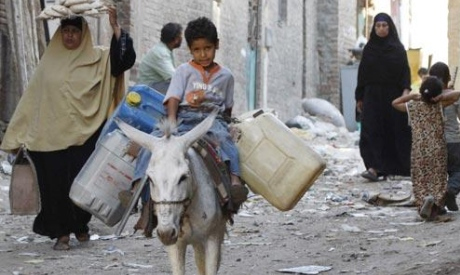
40 per cent of families believe their income insufficient to cover their needs(Photo: Reuters)
Six out of 10 Egyptian households earn less than LE20,000 ($3,333) per year, previously unpublished official statistics from 2010 show.
Such figures back up findings from the latest survey by Egypt’s Information and Decision Support Center (IDSC), which show that 43 per cent of Egyptian households believe their income insufficient to cover their needs.
Figures also show that only 1 per cent of households made more than LE75,000 ($12,500) a year – a stark sign of Egypt's long-standing income inequality.
Only three out of every 100 families made more than LE50,000 a year.
Such disparity in incomes reflects a deteriorating wage base, where more than two thirds of income is earned through salaries and around 14 per cent comes via unofficial gifts and grants.
Egypt ranked 32 on the GINI equality index in 2005, slightly improving over 2001 when it scored 34.
Sweden is the most equal country in the world with an index of 23. Both Turkey and Tunisia are more unequal than Egypt with indexes of 43.6 and 40 respectively.
The index measures the extent to which the distribution of income -- or, in some cases, consumption expenditure -- among households deviates from a perfectly equal distribution. An index of zero would mean perfect equality.
Egypt's poverty rate remained steady between 1996 and 2005, where two of every 10 Egyptians earned less than $2 a day.
Ironically, Egypt has the largest number of billionaires in Africa, with 7 of the continent’s 40 richest people holding Egyptian citizenship, according to a recent report by Forbes magazine.
A report released on Monday from the OECD also shows a rising gap between rich and poor in the developed world.
“There was a rise in the share of top-income recipients in total gross income in the three decades from 1980 to 2010 in all countries, with considerable variation from country to country,” said the report.
“It was most marked in the United States: prior to the onset of the financial and economic crisis in 2008, the share of the richest 1% in all income reached close to 20%.”
However, the report added that even in countries perceived as "fairer" – such as Germany, Denmark and Sweden – the gap between rich and poor had expanded: from five to one in the 1980s to six to one today. In rising powers like Brazil, Russia, India and China the ratio is 50 to one.
Slovenia is the most equal country, according to OECD data.
Short link: